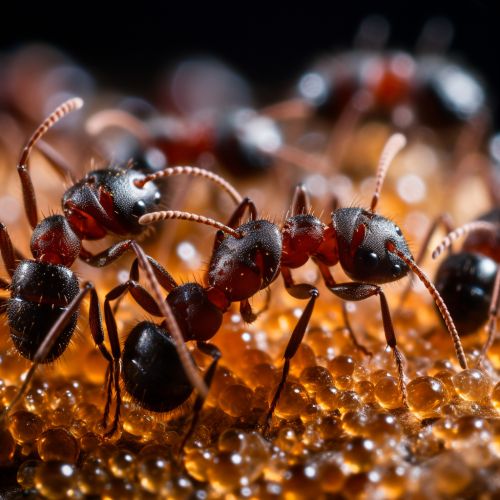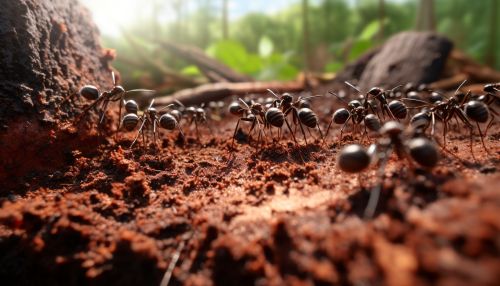The Evolution of Social Behavior in Insects
Introduction
Social behavior in insects has been a subject of scientific interest for many years. It refers to the interactions among individuals within an insect population, which can include behaviors such as cooperation, aggression, reproduction, and communication. The evolution of these behaviors has been shaped by a variety of factors, including environmental pressures, genetic predisposition, and the need for survival and reproduction.


Evolutionary Origins of Social Behavior in Insects
The evolutionary origins of social behavior in insects are complex and multifaceted. Many theories have been proposed to explain the evolution of social behavior in insects, including kin selection, group selection, and reciprocal altruism. These theories are not mutually exclusive and may all play a role in the evolution of social behavior in insects.
Kin Selection
Kin selection is a theory that proposes that individuals are more likely to help relatives, or kin, because they share a significant proportion of their genes. This theory is often used to explain the evolution of eusociality in insects, which is characterized by cooperative brood care, overlapping generations, and a division of labor. Eusociality is most commonly observed in hymenopterans (ants, bees, and wasps), but also occurs in some termites, thrips, and beetles.
Group Selection
Group selection is a theory that proposes that natural selection can act at the level of the group, rather than just the individual. This theory is often used to explain the evolution of cooperative behaviors in insect populations, where the survival and reproduction of the group as a whole is prioritized over the survival and reproduction of individual members.
Reciprocal Altruism
Reciprocal altruism is a theory that proposes that individuals are more likely to help others if they can expect to receive help in return. This theory is often used to explain the evolution of cooperative behaviors in insect populations, where individuals help each other in a reciprocal manner.
Factors Influencing the Evolution of Social Behavior in Insects
Several factors have been identified that influence the evolution of social behavior in insects. These include environmental pressures, genetic predisposition, and the need for survival and reproduction.
Environmental Pressures
Environmental pressures can play a significant role in the evolution of social behavior in insects. For example, in environments where resources are scarce or competition is high, insects may evolve cooperative behaviors to increase their chances of survival and reproduction. Similarly, in environments where predation pressure is high, insects may evolve defensive behaviors such as group living or cooperative defense.
Genetic Predisposition
Genetic predisposition can also influence the evolution of social behavior in insects. For example, certain genes have been identified that influence the behavior of eusocial insects, such as ants, bees, and wasps. These genes can affect a variety of behaviors, including brood care, foraging, and defense.
Need for Survival and Reproduction
The need for survival and reproduction is a fundamental driving force behind the evolution of social behavior in insects. For example, cooperative behaviors such as group living and cooperative brood care can increase the survival and reproduction of insect populations.
Examples of Social Behavior in Insects
There are many examples of social behavior in insects, ranging from simple interactions to complex social structures.
Ants
Ants are perhaps the most well-known example of social behavior in insects. They live in large colonies, with a complex social structure that includes a queen, workers, and soldiers. Ants exhibit a variety of social behaviors, including cooperative brood care, division of labor, and complex communication.
Bees
Bees are another well-known example of social behavior in insects. They also live in large colonies, with a complex social structure that includes a queen, workers, and drones. Bees exhibit a variety of social behaviors, including cooperative brood care, division of labor, and complex communication, including the famous waggle dance.
Termites
Termites are a less well-known but equally fascinating example of social behavior in insects. They live in large colonies, with a complex social structure that includes a king and queen, workers, and soldiers. Termites exhibit a variety of social behaviors, including cooperative brood care, division of labor, and complex communication.
Conclusion
The evolution of social behavior in insects is a complex and fascinating field of study. It involves a variety of factors, including environmental pressures, genetic predisposition, and the need for survival and reproduction. The study of social behavior in insects can provide valuable insights into the evolution of social behavior in other animals, including humans.
